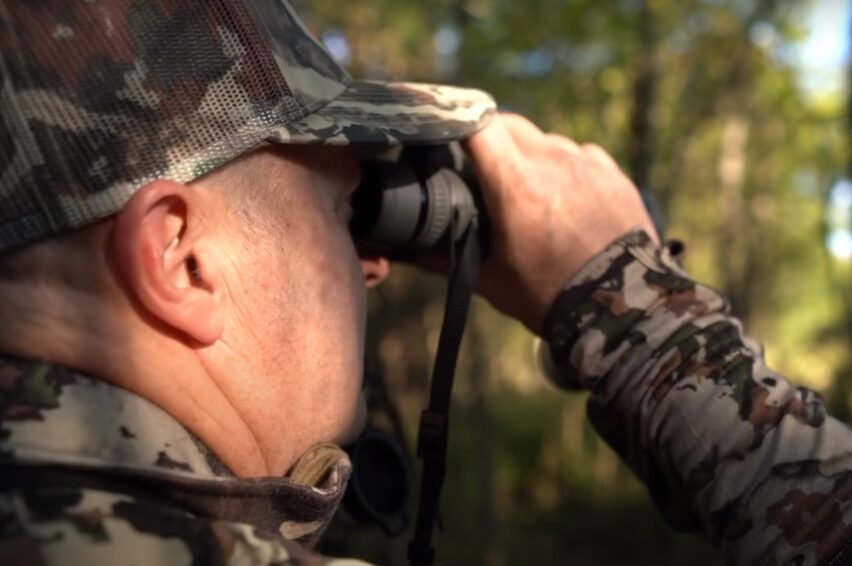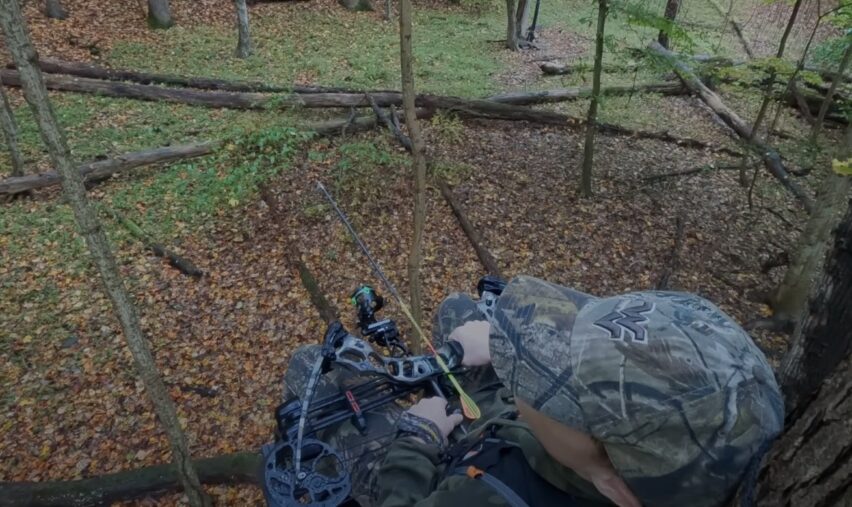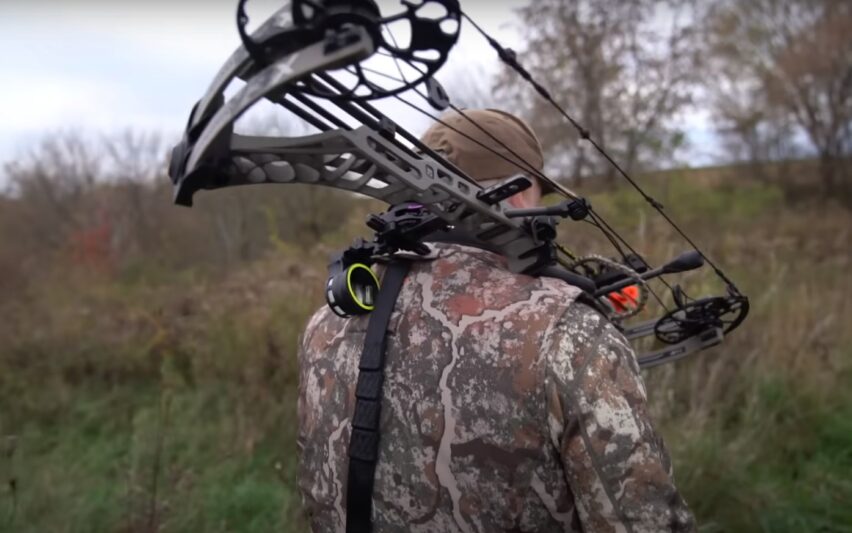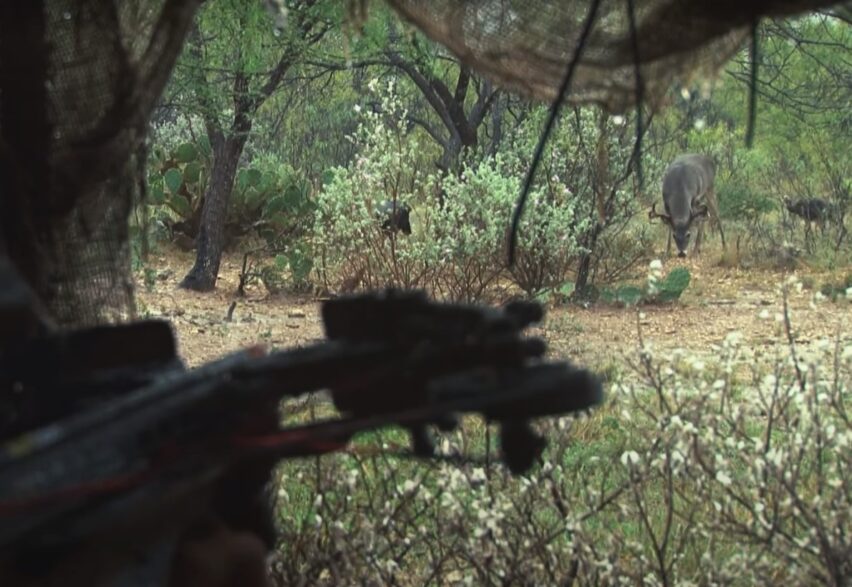The behavior of deer changes with the weather, making precipitation a critical factor in planning. Light showers to heavy downpours can significantly affect deer movement, influencing hunting strategies from gear selection to tracking techniques.
Hunters must adapt to these conditions, recognizing that rain can offer unique advantages, such as quieter movement through damp forests and reduced human scent. However, the elements also introduce obstacles like difficult blood trailing and the need for equipment protection.
Hunting in the rain calls for adapting to the conditions, blending the quiet of a damp forest with the challenge of keeping gear dry. Now I will explain more about the best weather conditions and whether it is a good idea to start a hunting journey during the rain.
Key Takeaways
What Are the Perfect Conditions?
The quest for the perfect hunting conditions is as much about strategy as it is about understanding the environment and the behavior of deer. While individual preferences may vary, certain environmental factors are widely recognized to significantly enhance the chances of a successful hunt.
Weather and Temperature

The ideal weather for hunting features cool, crisp air, particularly in the early morning or late afternoon. These conditions are not just about comfort; they align with the times deer are most active.
During cooler temperatures, these animals are more likely to move around for feeding, making them easier to spot. Overcast skies can also play to the hunter’s advantage, as deer feel secure under the diffuse light, potentially leading to increased activity throughout the day.
Do you know what a female deer is called? If not, check out here.
Wind Direction
Wind direction is a critical factor in planning a successful hunt. The perfect scenario involves a light to moderate breeze that carries the hunter’s scent away from the deer, preventing them from catching wind of human presence.
Skilled hunters pay close attention to the wind, using it to dictate their approach and positioning. This can often mean the difference between a successful hunt and a day spent in vain.
Precipitation

While heavy rain might deter some hunters, light rain or the period just after a rainstorm can create prime hunting conditions. The rain helps to mask noise, allowing hunters to move more quietly through the woods.
Additionally, rain can wash away human scent, reducing the likelihood of deer detecting the hunter’s presence. After a storm, deer are also more likely to be active, searching for food and water, which can lead to increased sightings.
Barometric Pressure
Changes in barometric pressure can influence deer movement. A falling barometer, often preceding a storm, can trigger increased activity among deer, as they sense the changing conditions and feed more aggressively before bad weather sets in.
Conversely, a rising barometer following a storm can also lead to heightened activity as the animals take advantage of the improving conditions to feed and move.
Moon Phase
Though debated among hunters, some believe that the moon phase can affect deer behavior. The theory suggests that deer are more active during times of a full moon, as the increased nighttime light allows them to feed and move more freely after dark.
This, in turn, can affect their daytime patterns, potentially making them more predictable to hunters who understand these cycles.
Hunting Pressure
The amount of hunting pressure in an area can also dictate the perfect conditions for a hunt. Areas with lower hunting pressure are more likely to have deer that are less skittish and more predictable in their patterns.
Early season hunts, before deer become wary of human presence, can offer an advantage, as can hunting in remote or less-accessed areas where deer are not constantly disturbed.
If you ever find yourself in a close encounter with the deer, be sure to learn more about the signals, and whether it will become aggressive.
Main Benefits of Hunting During the Rain

Hunting in the rain is often overlooked but can be remarkably advantageous for those willing to brave the elements. The unique conditions brought on by rainfall create opportunities for hunters to enhance their chances of success. Here are some of the main benefits:
- Quieter Approach: Rain naturally dampens noise, allowing hunters to move through the woods more quietly. This reduced sound helps in approaching deer without startling them, providing a significant advantage in getting closer for a clear shot.
- Scent Masking: One of the most challenging aspects is managing human scent. Rain helps in this regard by diluting and washing away scent particles, making it harder for deer to detect the presence. This natural scent control can be crucial in stalking or sitting in a stand without being noticed.
- Increased Deer Movement: After a rainstorm, especially following heavy downpours, deer are more likely to be active. They come out to feed and explore, making it an ideal time for hunters to spot them. The period immediately following a storm often sees a spike in deer activity, as they take advantage of the cooler temperatures and fresh vegetation.
- Enhanced Tracking: While rain can make tracking a shot deer more challenging, it also makes fresh tracks easier to spot. Hunters can use this to their advantage, especially in the early hours after rain, to follow deer movements and patterns.
- Reduced Hunting Pressure: Many hunters prefer not to venture out in the rain, which means those who do can enjoy reduced competition. Less hunting pressure means deer are less disturbed and more likely to exhibit natural behaviors, increasing the chances for those in the field to encounter them.
- Visual Camouflage: Rain and the resulting moisture in the environment can help break up the hunter’s outline, providing natural camouflage. This visual distortion can make it harder for deer to spot the hunter, especially when combined with appropriate rain gear.
What Are the Downsides?

While hunting in the rain can offer unique advantages, it also comes with its set of challenges. Understanding these can help hunters prepare better and decide whether the benefits outweigh the potential drawbacks.
- Tracking Difficulties: Rain can quickly wash away blood trails, making it significantly harder to track a wounded deer. This can lead to lost game and wasted efforts, a situation no hunter wants to face.
- Equipment Concerns: Wet conditions demand extra care for hunting gear. Moisture can affect the performance of firearms, bowstrings, and optical equipment like scopes and binoculars. Protecting these items from the rain is crucial but can add to the hunter’s burden.
- Visibility Issues: Heavy rain can reduce visibility, making it difficult to spot deer at a distance. This can limit the effective range of a hunt and may result in missed opportunities or the inability to take a clear shot.
- Slippery Terrain: Rain makes the ground slippery, increasing the risk of accidents. Climbing tree stands or navigating steep terrain becomes more hazardous, requiring extra caution.
- Noise of Rain: While rain can mask some sounds, it can also make it harder for hunters to hear deer approaching. The constant noise of rain hitting leaves and the ground can drown out subtle signs of nearby game.
- Maintenance After the Hunt: Hunting gear, clothing, and equipment require thorough drying and cleaning after being exposed to rain. This maintenance is essential to prevent damage and ensure everything is in good condition for the next hunt.
FAQs
How do you attract deer?
You can attract deer by planting native plants, fruits, and grasses that deer like to eat. You can also use food attractants, peanut butter, or urine to lure deer to a specific spot.
How far can deer smell humans?
Deer can smell humans from a quarter of a mile away under normal conditions. If the wind and humidity are favorable, they can smell humans from half a mile or more. Deer have a very acute sense of smell and can detect up to six different odors at once.
Can deer see in the dark?
Yes, deer can see in the dark, and they see better in the dark than humans. Deer have special adaptations in their eyes that allow them to see well in low light conditions. They can also see motion very well, but they have poor color vision and focus.
How long do deer live?
The average lifespan of deer in the wild is 4 to 5 years. In captivity, deer can live up to 20 years or more. The oldest deer on record was a domesticated Scottish Red Deer doe named Bambi, who lived to be 31 years old.
Last Words
Hunting in the rain presents a unique set of opportunities and challenges. While it can enhance the hunting experience by offering quieter movement and less competition, it also requires careful preparation to overcome obstacles like tracking difficulties and equipment maintenance.
Ultimately, the decision to hunt in wet conditions depends on a hunter’s readiness to adapt and make the most of the environment.

